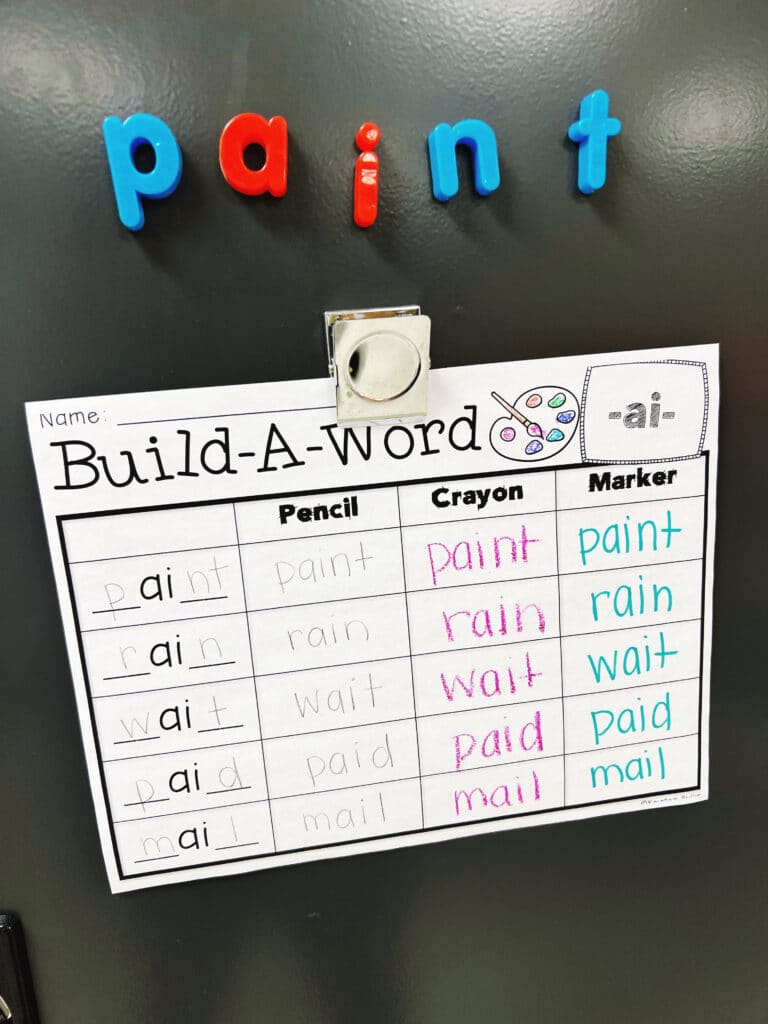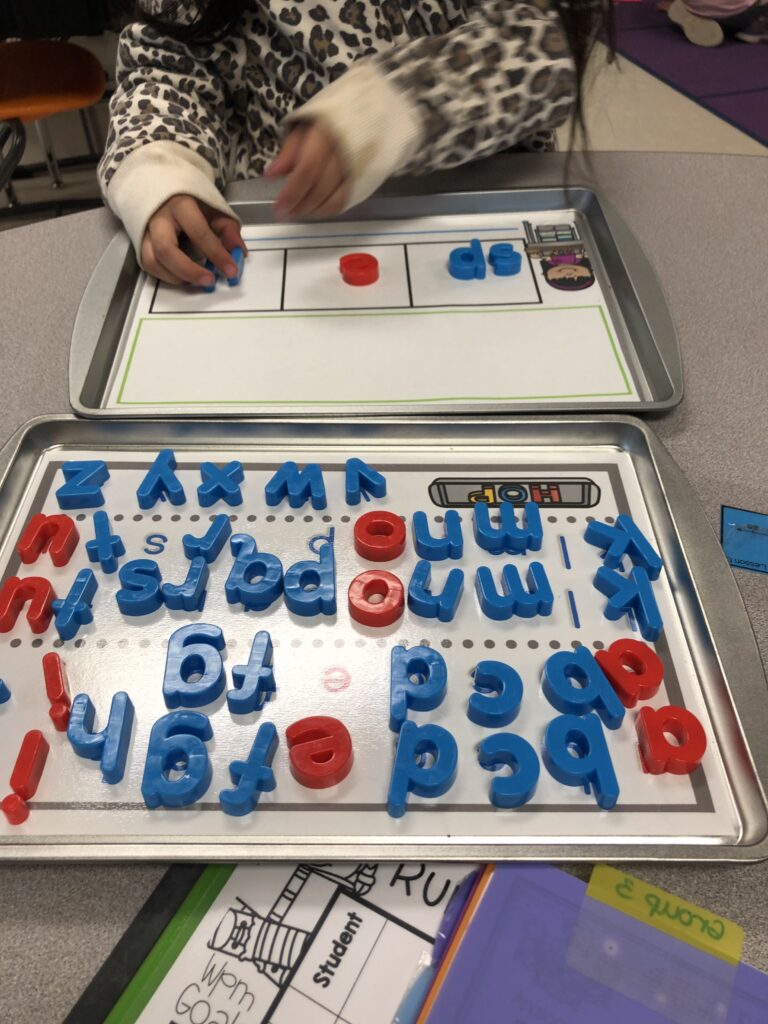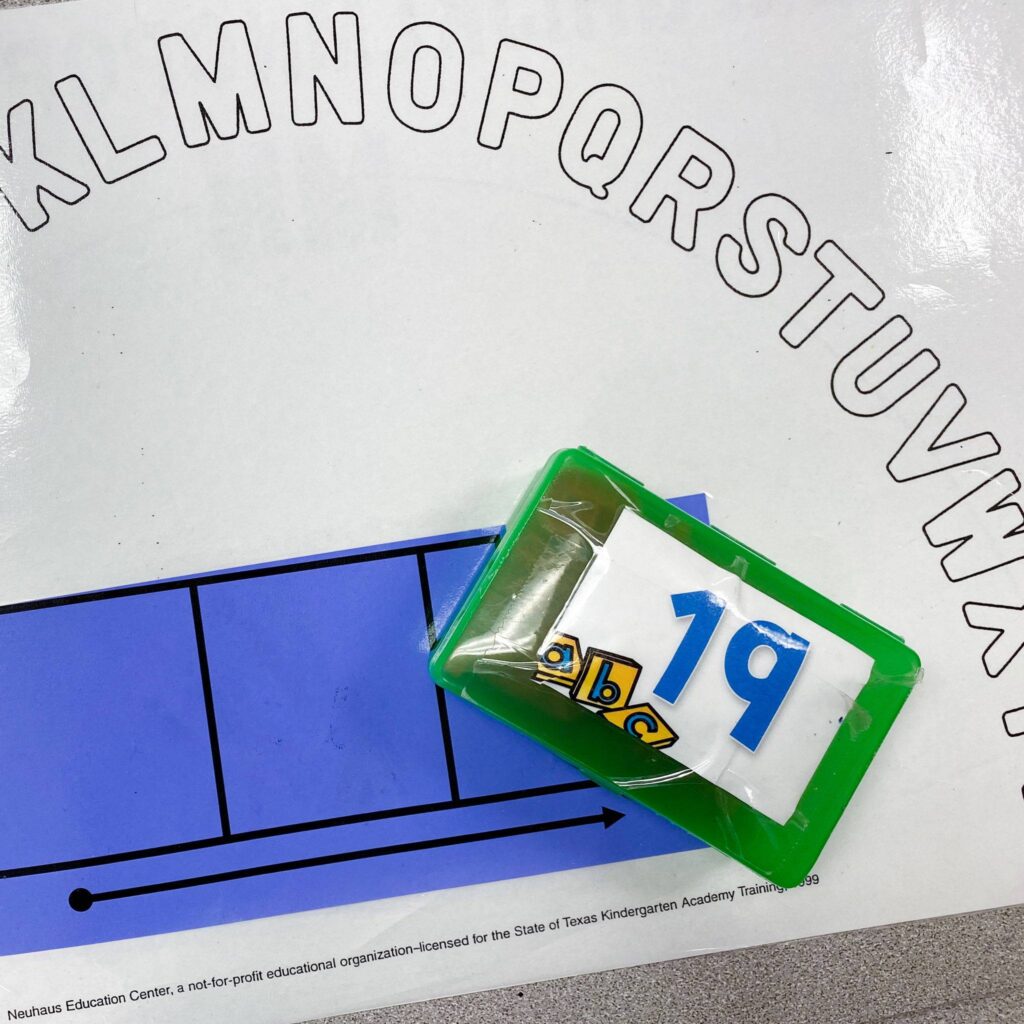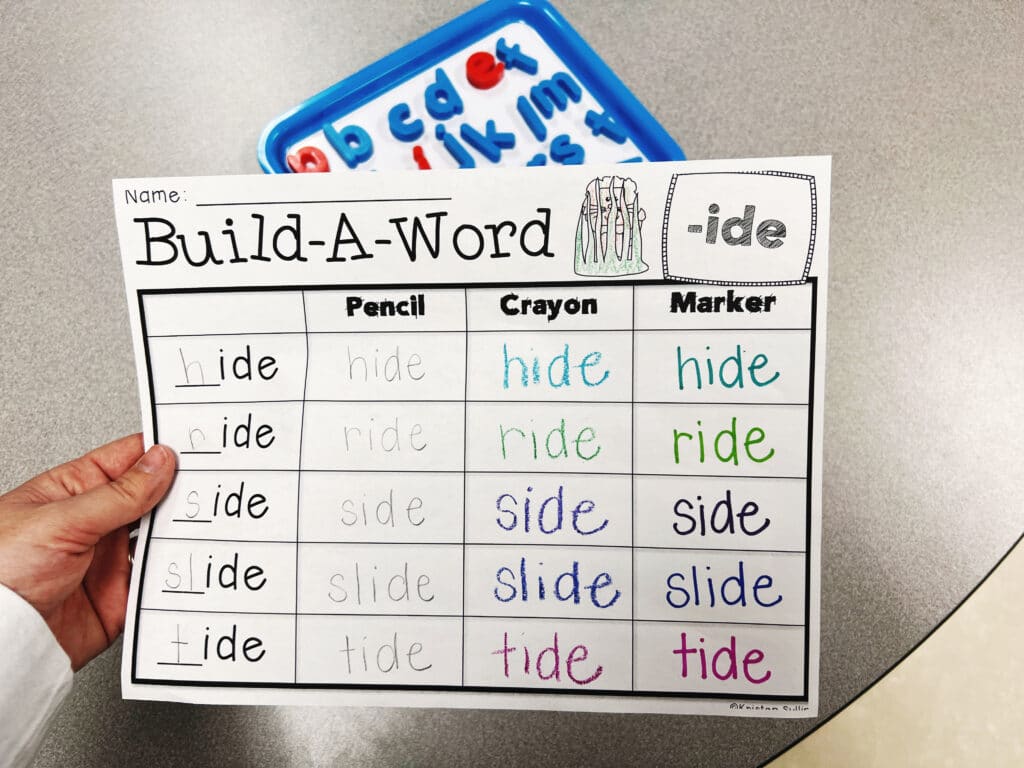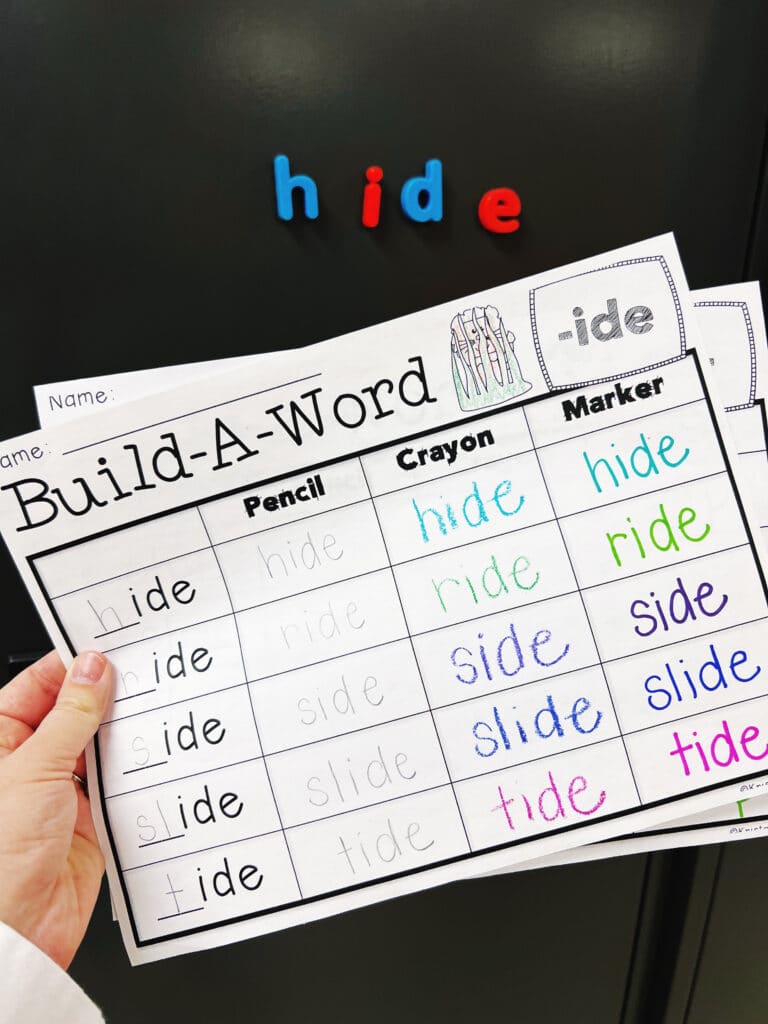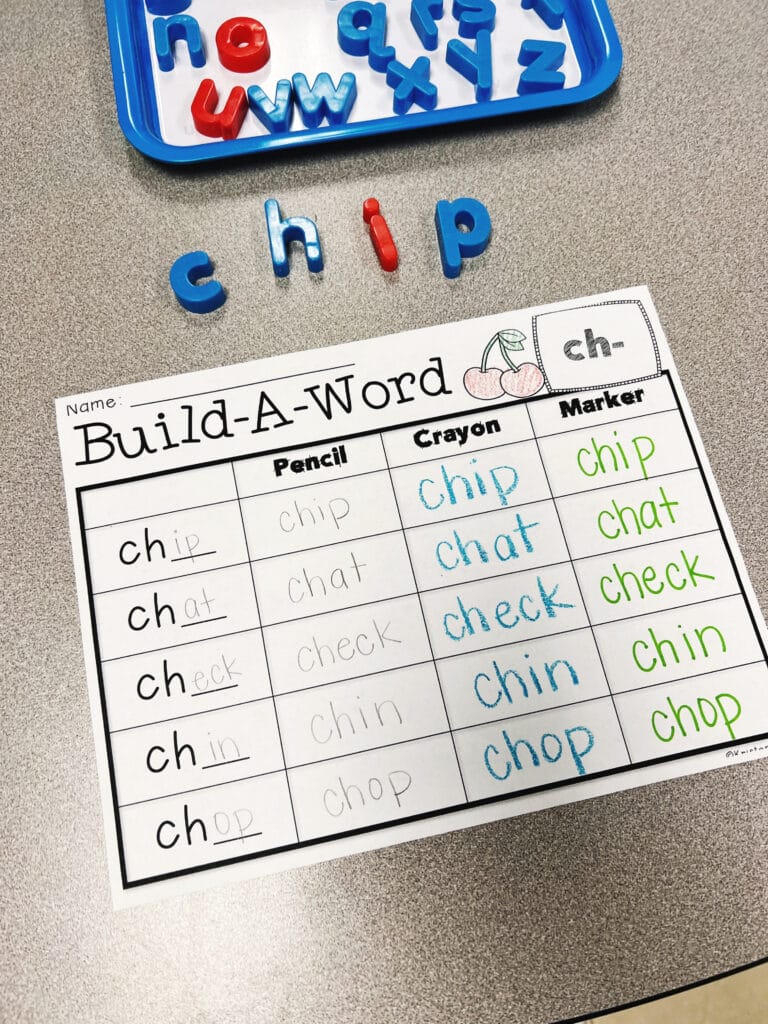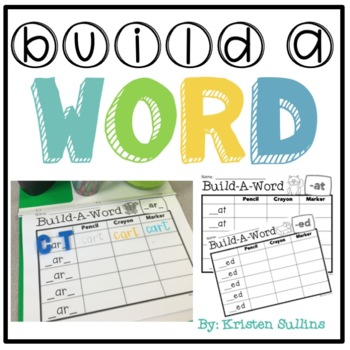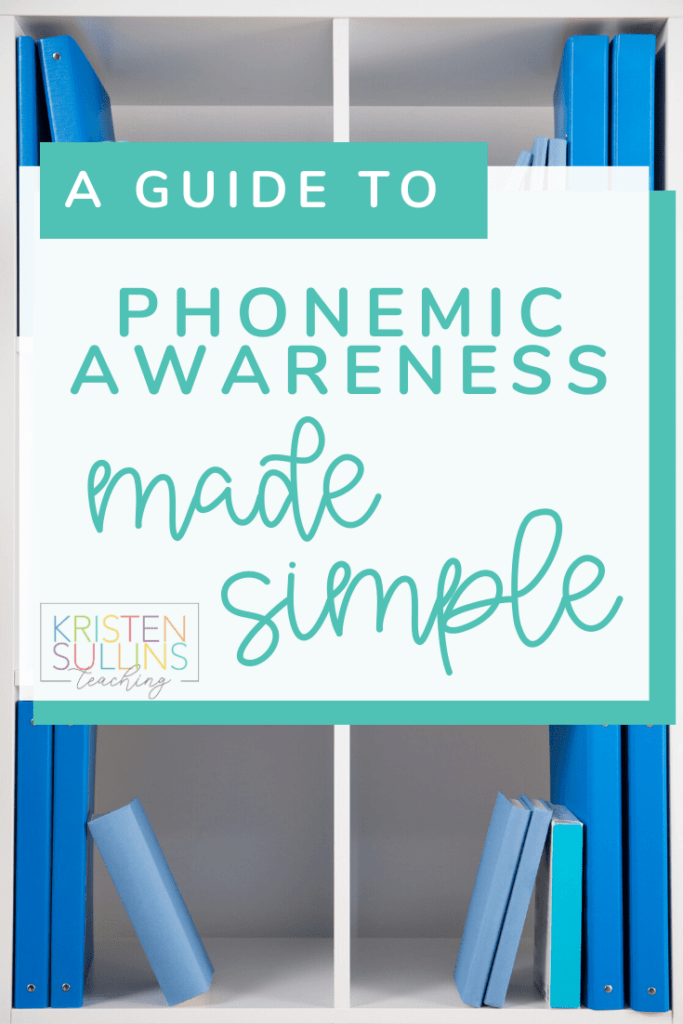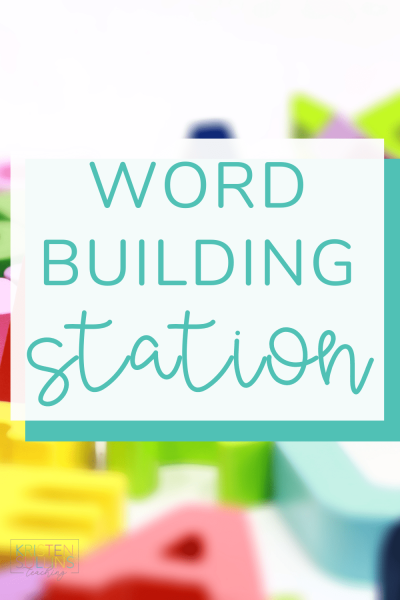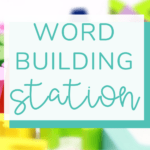All too often, our word work stations are filled with worksheets. Now, I’m not knocking worksheets… BUT I think a word work station should also have a hands on component as well.
When word work stations have a hands on component, they became a lot more fun and engaging for the students. Which means that the students are able to understand and master the concept of word building faster and easier.
Also, by adding in a hands on word building component, you are giving first grade students the structured support they need to independently build new words.
And, if you have them practice their words by writing it multiple times with multiple writing utensils they are also learning through repetition.
In this blog post, we are going to chat about:
- Spelling v. Word Work
- How to Set up a Word Building Station
- Kinds of Word Building Materials
- Storage Ideas
- How Students Use a Word Building Station
- How does Word Building fit into your schedule
- Benefits of Hands On Word Building
Not only will a hands on, word building station help your students, but if you set it up in the right way, it can save you hours of planning and prep time!
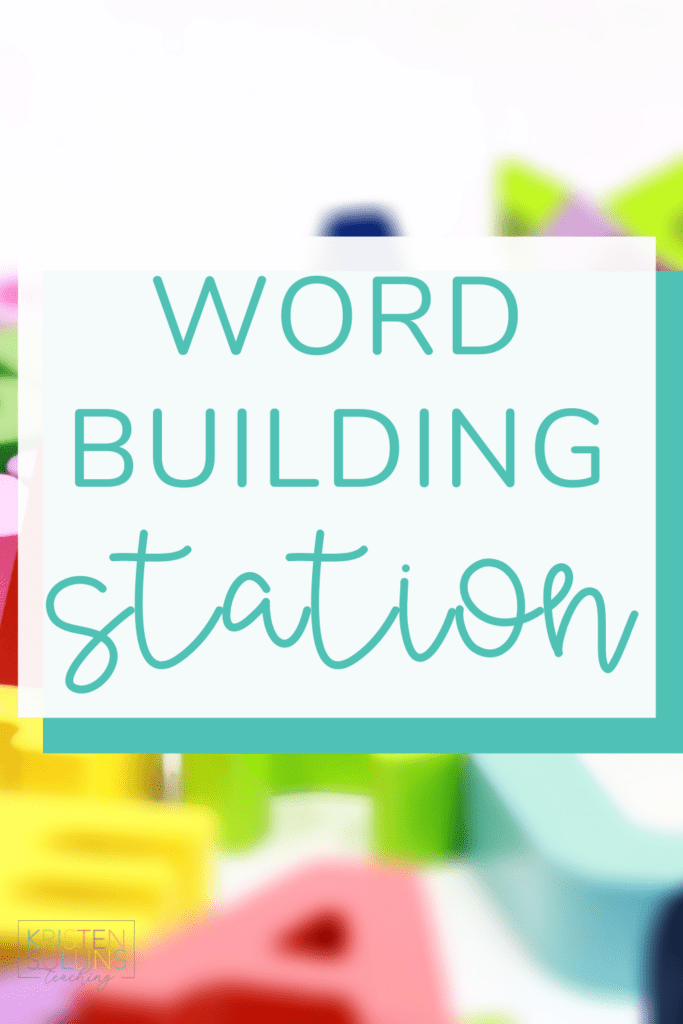
Spelling v. Word Work
What is the difference in spelling activities vs. word work? The short answer…. There isn’t one.
I think the true difference is really in your mindset shift.
Spelling
When I first started teaching first grade ten years ago, we taught “spelling”. We sent home a list of ten spelling words on Monday. We practiced the same ten words all week. We took a spelling test on Friday.
We recorded the spelling grade and never did anything else with it.
Word Work
Somewhere in my years of teaching first grade, we started to make the shift from spelling to what we now call “word work”.
We shifted from studying ten spelling words, to focusing more on a spelling pattern or what some teachers (including me) call a word family.
Word work is something that you can collect data on and help the student improve on that skill in your small groups.
How to Set up a Build a Word Station
When setting up a word building station for first grade, there are a few questions that you need to ask yourself first.
Where in my classroom am I going to put this station activity?
How many students are using the world building station at a time?
Where will students put the word building activity if they finish?
Where will students put the word building activity if they do not finish?
Here’s my advice…
If you are going to take the time to set up a word building station, do in a way that you are set for the YEAR!
What do I mean?
In first grade we cover enough spelling patterns to focus on a different spelling pattern each week!
Set up your word building station in a way that the activity never has to change, only the spelling pattern changes.
You don’t have to buy anything to make this work.
Simply set up your spelling or word work station (whatever you decide to call it) with the materials that students are going to be building words with.
After that, each week you will only have to change out the list of words or the worksheet to complete your word building station each week!
By doing this, you can follow the same routine every week of the school year!
Check out my post on Spelling Lists and Word Stations HERE.
What kind of hands on manipulatives do you need?
The go-to choice of almost every first grade teacher for word building materials is going to be magnetic letters.
They really just can’t be beat because they are a physical representation of what students are used to seeing. They are easy to manipulate and they are typically already purchased by the school.
But, if you are looking to spice things up a little bit, here are some alternatives to magnetic letters for a word building station:
- letter beads and pipe cleaners
- sand and q-tips
- reusable ice cubes
- stamps and ink
- stamps and playdough
- hangman boards
- dry erase boards
- magnadoodle boards
- keyboard for typing
Storage Ideas for Word Building Stations
I think storage styles really depend on your own personal preference and also what kind of room you have available in your classroom.
I have stored my magnetic/plastic letters in two different ways:
- magnetic cookie sheets
- travel soap boxes
Both of these methods serve two completely different purposes.
I use the magnetic cookie sheets for my small group table because it displays the letters in a way that students can find them quickly and easily.
The con is that they take up quite a bit of space.
I use the travel soap boxes for each students’ individual set of letters. (Yes, I have two different sets/kinds of alphabet letters and I know that I am very fortunate for that).
The travel soap boxes are PERFECT for each student because the close and they are very compact which means they can be stored INSIDE a students’ desk.
OR I can have all of the soap boxes stored in a tub at my spelling station.
How to Use a Word Building Station
I created a set of worksheets to use in my own word building station that allow my first grade students to follow the same routine every week of the school year.
To use this activity, students must:
- Builds a word with magnetic letters
- Write the word three times (with a pencil, crayon and marker)
Here’s a little more detail about this station activity for you…
Students are given the phonics/spelling pattern and they must add one letter (or more) to the word family to create a new word. Then the student must write the new word three times (in pencil, crayon and marker).
I have found in my own classroom that students love this activity because using pencils, crayons and markers is fun and engaging to them.
How Does Word Building Fit Into Your First Grade Schedule?
Remember how we talked about the shift from spelling to word work earlier?
This also requires a mindset shift in how word building fits into your normal first grade schedule.
Word building isn’t just for your “spelling block” anymore.
Word Building can (and should) now be incorporated into:
- Whole Group Writing Lessons
- Daily 5
- Guided Reading or Literacy Stations
- Morning Work
- Early Finisher Activities
Word Work Beyond the Classroom
Parents often ask me “What can we do at home to help our student?”. And while there are a lot of really great answers to that question, one of the most effective types of activities for parents to work on at home with their first grade student is word work/spelling.
This is typically a skill that is easy for students to explain to their student (unlike learning how to decode words or how to multiply fractions).
Plus, if you are able to send home manipulatives like plastic letters, then it becomes more fun and engaging for students at home to.
If you AREN’T able to send home plastic letters, you can always recommend things that parents can do at home for free like:
- writing out spelling words in sensory items like: shaving cream, salt, play dough and cookie sprinkles
- writing with fun markers and pens
Benefits of a Build a Word Station
Here’s the short answer of why word building stations are so great for first grade:
Hands on= more fun/engaging
Hands on= helps students understand and master the concept of word building faster and easier
Repetition= helps students commit the new spelling patterns to memory
What’s the TRUE benefit of building words with targeted phonics and spelling patterns?
- Phoneme blending in addition to onset and rhyme (word family) matching
What do I mean?
Once students are able to blend three phonemes to read a CVC word, the next step is to start “chunking” the word into parts to read it faster.
For example, instead of sounding out c-a-t, students should be able to recognize the rhyme and only have to blend c-at. It helps them read faster!
By giving students the support of providing the rhyme (word family), they are able to build new words by adding the onset and forming new words!
(In case you are wondering what an onset/rhyme is… it’s a fancy way of identifying what we normally refer to as word families.
The Rhyme starts at the first vowel and includes all of the subsequent letters. The Onset is all of the letters before the first vowel. For example, in the word cat, the onset is “c” and the rhyme is “at”.)
Build a Word Station
If you are ready to start your own word building station…
All of the resources seen in this post can be found in my NO PREP Build a Word product HERE:

